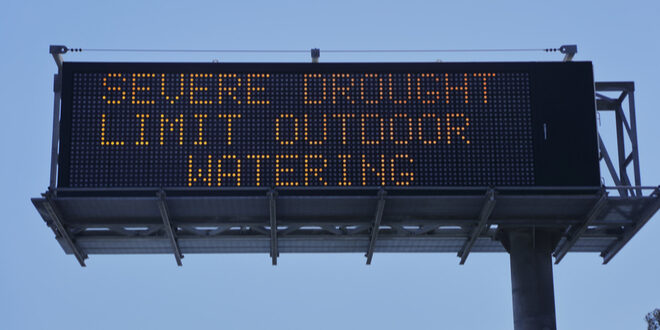As California faces a second consecutive dry year and many are saying we have slipped back into a drought, Governor Gavin Newsom on Wednesday directed state agencies to take immediate action to bolster drought resilience and prepare for future impacts should dry conditions extend to a third year.
The Governor also proclaimed a regional drought emergency for the Russian River watershed in Sonoma and Mendocino counties, where reservoirs are at record lows. That region, which relies more on rainfall, is isolated from state and federal aqueducts, making it especially vulnerable to drought.
“California is facing the familiar reality of drought conditions, and we know the importance of acting early to anticipate and mitigate the most severe impacts where possible,” Governor Newsom said. “Climate change is intensifying both the frequency and the severity of dry periods. This ‘new normal’ gives urgency to building drought resilience in regions across the state and preparing for what may be a prolonged drought at our doorstep.”
Some Bay Area water districts have already started to move forward with voluntary and mandatory restrictions.
Mendocino City Community Services District last month declared a Stage 3 Water Shortage which triggered a automatic 20% reduction in daily water allotment and Marin County’s water district announced mandatory water restrictions for about two-thirds of the county beginning May 1.
Though some say it isn’t enough and that the Governor should declare a statewide emergency.
“With the Governor’s drought declaration today in Sonoma and Mendocino Counties, the Central Valley can’t afford to be overlooked,” Republican state Sen. Andreas Borgeas said in a statement. “California is in a drought. We need a statewide emergency declaration immediately in order to deliver more water to farmers and growers in the Valley.”
Meanwhile, Southern California is better prepared for drought, due to being mostly supplied by big federal and state water systems, rather than local precipitation.
Metropolitan Water District of Southern California which serves 19 million people in six counties, says it has record reserves in regional reservoirs and groundwater banks—enough to carry it through this year and next.
“The good news is, we have enough water to get through this critically dry year. We’ve been
preparing for droughts like this. We have sufficient water in storage…” Metropolitan General Manager Jeffrey Kightlinger said. “But in the long run, we have to do much more to get prepared for the impacts of climate change. All of California’s sources of water are facing serious long-term challenges.”
For now, Californians will have to suffice with the targeted approach favored by the administration.
The full text of the emergency proclamation can be found here.
 California Water News Daily Your Source For Water News in California
California Water News Daily Your Source For Water News in California


